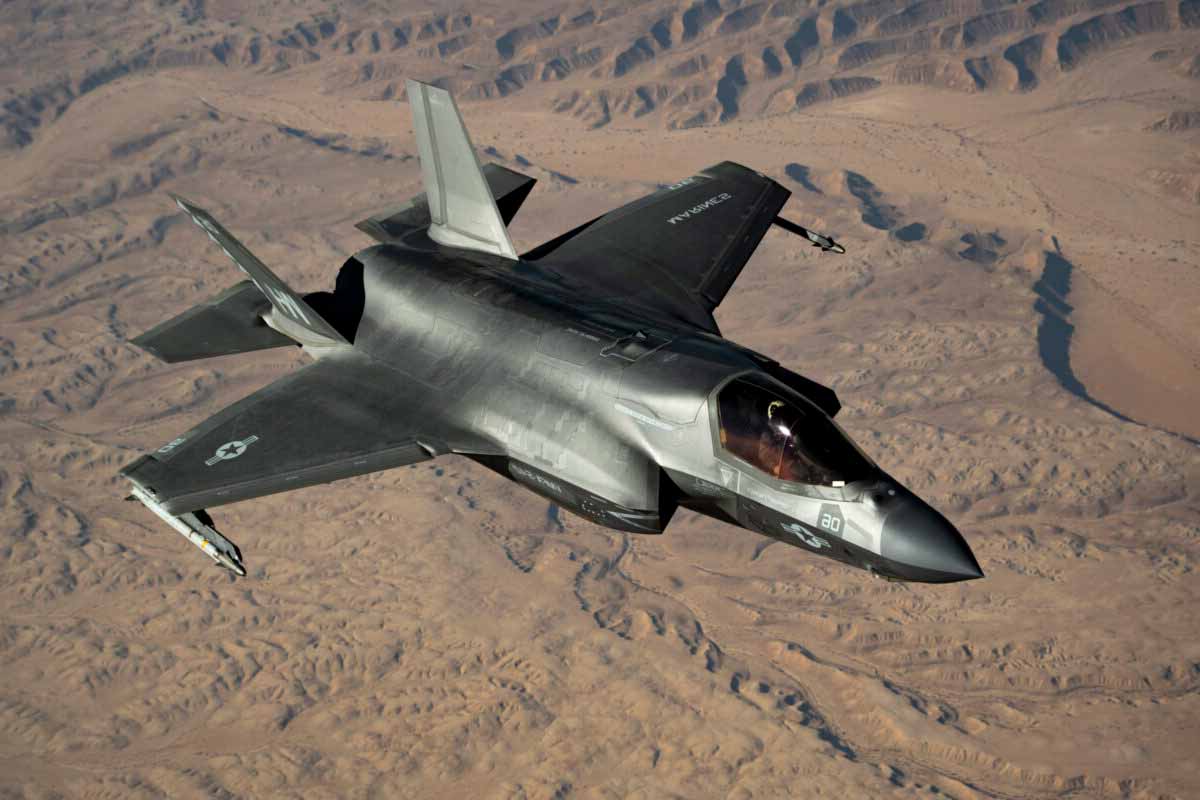Over five intense months overseas, Marine Fighter Attack Squadron 542 pushed their F-35 jets to the limit—flying thousands of hours and completing more than a thousand missions without a single mishap. Their precision and discipline kept every aircraft safe while delivering real combat results. The experience not only proved the team’s skill but also highlighted how the F-35 program’s technology and training come together under pressure.
Sustained operational tempo and what it proves
The deployment ran five months under US Central Command. The area spans the Middle East, plus Central and South Asia, with key waterways included. Aircrews executed 1,099 combat sorties and amassed 4,736 mishap-free flight hours, nearly 5,000 total without a single mishap.
That record sets a new benchmark for Marine aviation and joint integration with allies. It also validates procedures that kept risk in check while pressure stayed high. One mention of the F-35 here meets the placement requirement.
VMFA-542 returned earlier this month to Marine Corps Air Station Cherry Point in North Carolina. Leaders called the tour “historic,” noting the squadron’s high mission-capable rate. Numbers matter because they separate luck from repeatable practice. When flight lines hold schedule, crews learn what scales.
Sorties and mission profiles that drove real learning
What the squadron did tracks with modern crisis response. Crews flew close air support for ground forces when minutes mattered. They provided armed overwatch so troops could maneuver while threats stayed deterred. They also performed defensive counter-air to shield assets and key routes as conditions shifted across the region.
Those profiles forced discipline because each role stresses different systems. Sensors, data fusion, and targeting needed to work together while weather, range, and timing changed. The F-35 brings fused situational awareness, so pilots could find, fix, and finish while sharing a common picture. Teams refined handoffs and deconfliction as missions stacked up.
Integration with other services and allied partners accelerated learning. A forward-deployed squadron must plug into joint command and control, then pass clean targeting data. Because partners flew alongside, crews practiced standards that travel well. The result was a playbook that reduces friction, even when airspace is crowded and dynamic.
STOVL capability and what it unlocked tactically
The Marine Corps flies the B variant, built for short takeoff and vertical landing using a lift fan. That capability matters because it expands where jets can operate. Amphibious assault ships become launch points. So do austere sites closer to the fight, which compresses timelines and keeps effects on call.
With forward arming and refueling, aircraft turn faster while ground crews keep tempo. Pilots learn to read deck cycles, ship motion, and weather windows. The model trades long runways for proximity, which changes how commanders think about risk and reach. The F-35 stays relevant because it can bring sensors where basing is limited.
The squadron reached full operating capability with the B variant in April 2024 and fields 12 jets. It is one of a dozen active Marine B-variant squadrons. That structure spreads experience as units rotate. Knowledge from this tour now informs checklists, training reps, and maintenance rhythms across the enterprise.
Costs, readiness, and the program debate around the F-35
Success in theater sits beside a harder truth. Oversight reports cite maintenance bottlenecks, upgrade delays, and spare-parts shortfalls. The program’s expected lifetime cost rose above $2 trillion, up from $1.7 trillion. Sustainment remains the long pole. In 2023, the US fleet was mission-ready just over half the time.
Those numbers draw criticism because readiness drives deterrence. Crews need jets that start, launch, and finish the plan. Leaders argue recent deployments show progress under pressure. When units hit tempo without mishaps, practices deserve to scale. The F-35 still faces sustainment headwinds, yet field results suggest pathways that reduce downtime.
Procurement remains large because the jet anchors allied airpower. Standardization across partners simplifies training and operations. It also spreads upgrade costs. While debates continue, the Marine example adds data. A forward squadron met real demand, kept safety intact, and integrated with joint forces through a major regional crisis.
Allies, ships, and the widening operating envelope
Abroad, partner fleets grow. Japan is a key buyer, and its forces tested the B variant from JS Kaga’s deck during night evolutions. That shift changes Indo-Pacific basing math because carriers and converted ships add flexible launch points. It also builds shared tactics and logistics that matter in contested seas.
At sea, amphibious assault ships such as USS Tripoli offer mobile airfields. Crews train for deck operations, lighting, and tight spacing. Those skills pay off because ships can reposition while sustaining a flight plan. As navies coordinate, sensor networks reach farther while timelines shrink. The F-35 acts as a node, not just a shooter.
Across variants, roles differ. The Air Force’s A model carries an internal gun and emphasizes land-based operations. The C model is built for catapults and arresting gear on carriers. Together, fleets cover the map. For Marines, the B variant’s STOVL edge remains decisive because it places stealth sensors and precision weapons near the fight.
Why this milestone matters next for training and sustainment
A mishap-free, high-tempo tour delivers more than headlines. It supplies a blueprint for training plans, spare-parts staging, and software readiness that commanders can repeat. While sustainment challenges persist, the data here shows how process discipline and integration help unlock the F-35 promise under real operational stress.
